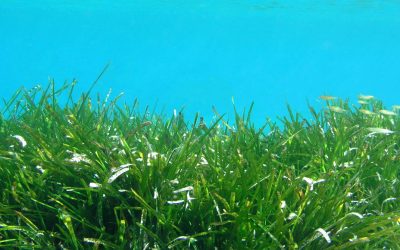Volunteers are needed to help prepare eelgrass shoots for transplant during our upcoming eelgrass restoration work at Gartley Point!
June Eelgrass Restoration Completed
Between June 2 and 11, six dedicated staff members, approximately 23 volunteers and the UB Diving crew worked together to accomplish the impressive task of transplanting 6,000 stems of eelgrass!
Carbon Stocks, Sources, and Accumulation Rates in Eelgrass Meadows
Understanding carbon dioxide (CO2) sources and sinks is crucial for combating climate change. Vegetated ecosystems, including coastal habitats like mangroves, salt marshes, and seagrass meadows, play a significant role in capturing and storing carbon, known as “blue carbon.”
Technician Report – Tuesday, Sept 14
In July, our technician team ventured into Hollyhock Flats to conduct a plant survey. The goal was to understand the current plant community structures throughout the saltmarsh. This data can be used for restoration efforts at Kus-kus-sum. We also learned about invasive plant presence and range within Hollyhock for future removal efforts.
Salt Marsh Restoration in the K’ómoks Estuary at Dyke Slough
This restoration built up a new marsh platform to replace lost, historic tidal marsh. The newly build platform is then planted, all to help support wildlife and coastal resiliency in our thriving estuary.
Coastline Restoration in Fanny Bay
On June 17-19, 2020 Project Watershed organized a planting session to restore the vulnerable coastline in the Fanny Bay area. During the three days, our staff and 19 volunteers helped plant almost 2500 individual plants, comprised of Salicornia, Distichilis and dune grass species. This planting compliments another coastal restoration project where the shoreline was revegetated to protect the area from erosion.
Salish Sea Kelp Restoration Enhancing Habitat Connectivity
A kelp forest is a type of nearshore aquatic habitat, found along rocky coasts with wave action or strong currents in depths of 4 to 20 meters.
Project Watershed Continues Restoration Work Along Mallard Creek
Back in February, Project Watershed and volunteers from Aecon Water Infrastructure Inc. planted over 100 native species along a section of Mallard Creek.
Creating Habitat Connectivity
Comox Valley Project Watershed is focusing on the restoration of three marine habitats – kelp, eelgrass and saltmarsh – to facilitate connectivity between the subtidal, intertidal and foreshore zones in the estuary.
Restoring Kelp Forest Habitat
Comox Valley Project Watershed Society is working with partners to restore kelp forests using two methods: planting seeded kelp lines and reducing grazing pressure by sea urchins.
Kelp Forests
A kelp forest is a type of nearshore vegetative habitat, found along rocky coasts with wave action or strong currents in depths of 4 to 20 metres.
Our Blue Carbon Initiative
Project Watershed in cooperation with the The Estuary Working Group is doing research to learn more about how salt marsh and eelgrass beds in our local Estuary contribute to the uptake and storage of carbon from the atmosphere.












